Emergencies
Orthodontic Emergencies
Overview of Orthodontic Emergencies
Although there are very few true orthodontic emergencies, during the course of treatment you may discover that you have loose or broken brackets or that the orthodontic wires may shift and begin irritating your lips or cheeks. Patients are encouraged to contact our office during working hours for all emergencies. Emergencies seen during office hours are given the next available appointment.
Below is a list of common problems and how they may be remedied at home, listed in order from least to most severe. Only the most severe may require immediate attention by one of our doctors. If you have a problem that you cannot resolve on your own or are experiencing a major orthodontic emergency, please call our emergency line at (346) 444-0111.
Terminology

Problems List
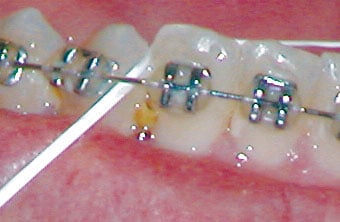
Food stuck between teeth
This is not an emergency, but can be a little uncomfortable or embarrassing for the braces-wearing patient. It is easily fixed with a piece of dental floss. Try tying a small knot in the middle of the floss to help remove the food, or use an interproximal brush or toothpick to dislodge food caught between teeth and braces.
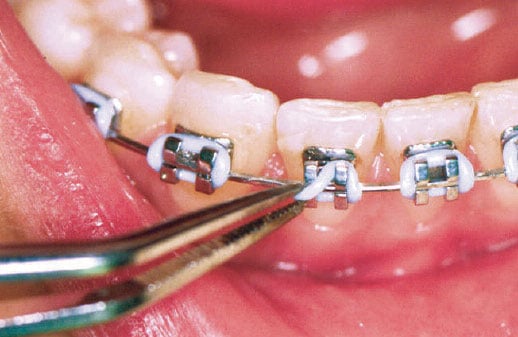
Ligature tie came off
Tiny rubber bands or small, fine wires, known as ligatures, hold the wire to the bracket. If a rubber ligature should come off, you may be able to put it back in place using sterile tweezers. If a wire ligature comes loose, simply remove it with sterile tweezers. If the wire ligature is sticking out into the lip but is not loose, it may be bent back down with a Q-tip or pencil eraser to eliminate the irritation. Of course, when one ligature pops off or breaks, others may follow. Be sure to examine all ligatures. Missing or broken ligatures should be brought to the attention of the patient’s parent or guardian, who should then inform our doctors. If a rubber or wire ligature is lost, notify the parent or guardian so that our doctors may advise whether the patient should be seen.
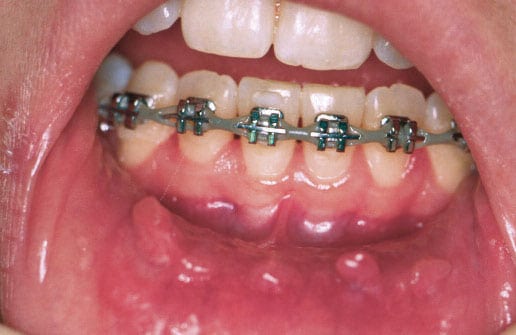
Mouth sores
Some patients are susceptible to episodes of mouth sores. While braces do not cause them, they may be precipitated or exacerbated by an irritation from braces. One or several areas of ulceration of the cheeks, lips or tongue may appear. This is not an emergency, but may be very uncomfortable for the patient. Prompt relief may be achieved by applying a small amount of topical anesthetic (such as Orabase or Ora-Gel) directly to the ulcerated surface using a cotton swab. Instruct the patient to reapply as needed.
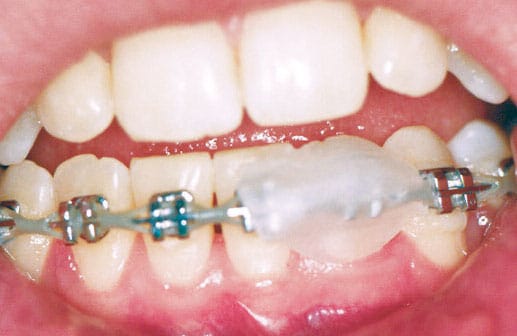
Irritated Cheeks, Lips, or Tongue
Sometimes new braces can be irritating to the mouth, especially when the patient is eating. A small amount of non-medicinal relief wax makes an excellent buffer between metal and mouth. Simply pinch off a small piece and roll it into a ball the size of a small pea. Flatten the ball and place it completely over the area of the braces causing irritation. The patient may then eat more comfortably. Let the patient know that if the wax is accidentally ingested, it’s not a problem. The wax is harmless.
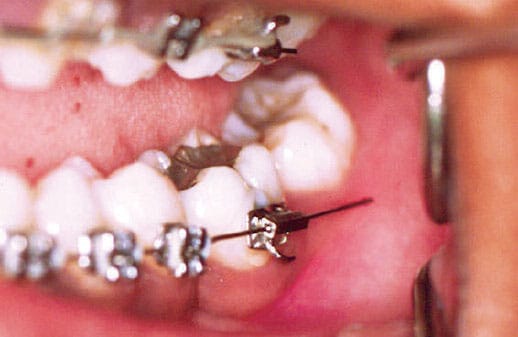
Protruding Wire
Occasionally, the end of a wire will work itself out of place and irritate the patient’s mouth. Use a Q-tip or pencil eraser to push the wire so that it is flat against the tooth. If the wire cannot be moved into a comfortable position, cover it with relief wax. (See Irritation of Lips or Cheeks above for instructions on applying relief wax.) The patient’s parent or guardian will need to make our doctors aware of the problem. In a situation where the wire is extremely bothersome and the patient will not be able to see one of our doctors anytime soon, you may, as a last resort, clip the wire. Reduce the possibility of the patient swallowing the snipped piece of wire by using folded tissue or gauze around the area. Use a pair of sharp clippers and snip off the protruding wire. Relief wax may still be necessary to provide comfort to the irritated area.
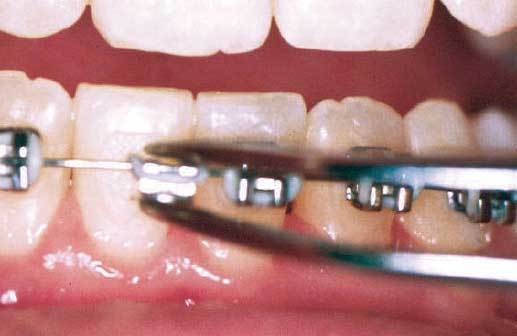
Loose brackets, wires, or bands
If the braces have come loose in any way, the parent or guardian needs to be notified, and they should call our office to determine appropriate next steps. Brackets are the parts of braces attached to teeth with a special adhesive. They are generally positioned in the center of each tooth. The bracket can be knocked off if the patient has eaten one of those hard or crunchy foods orthodontic patients are instructed to avoid, or if the mouth is struck while at play. (Encourage all patients, especially those with braces, to wear a protective mouth guard while playing sports.) If the bracket is off center, the adhesive may have failed. In this instance, it is best to immediately notify one of our doctors, who will determine the course of action. If the loose bracket has rotated on the wire and is sticking out and the patient cannot immediately be taken to our office, you can do a temporary fix to alleviate discomfort and prevent further damage, but take care to prevent swallowing or other injury. To put the bracket back in place, use sterile tweezers to slide the bracket along the wire until it is between two teeth. Rotate the bracket back to the proper position, then slide it back to the center of the tooth.

Traumatic Accidents and Accidental Swallowing of Appliances
If the patient has suffered trauma to the mouth, use ice immediately to reduce swelling. If the teeth are displaced and don’t fit together properly, arch wires are bent, or soft tissue is stuck in the braces, call our office to schedule an appointment immediately.
Although rare, patients may accidentally swallow one of their braces or part of an appliance. This can be fairly alarming to a patient, so we ask that you help them remain calm. If the patient is having trouble breathing or coughing excessively, the piece may have been aspirated. If you are unable to see the piece and believe it may have been aspirated, the parent or guardian and our office should be notified immediately. If the patient is having trouble breathing you should not hesitate to seek emergency care.